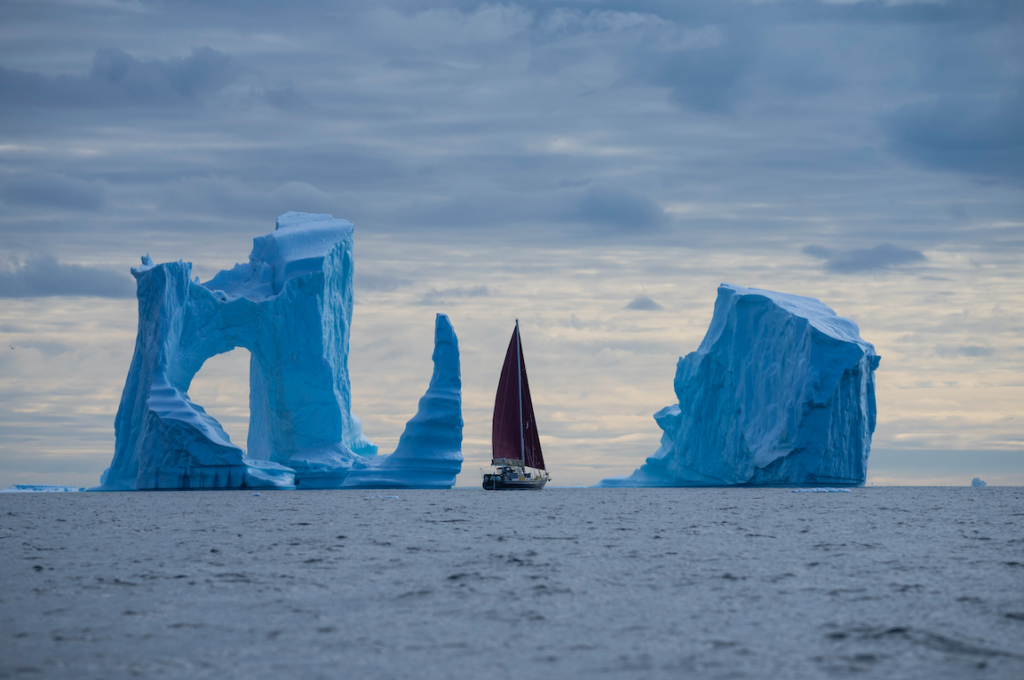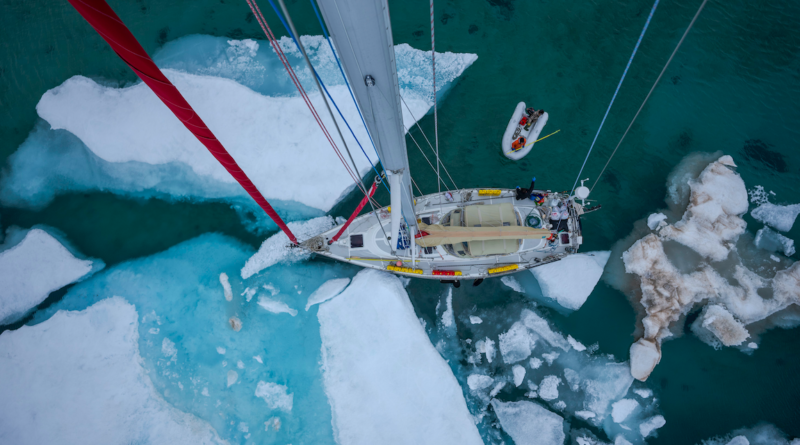INTERVIEW: Following in Sir John Franklin’s footsteps in ‘Lost in the Arctic’
Photo: On Explorer: Lost in the Arctic, the boat’s crew works to free the Polar Sun from the ice in Pasley Bay, Nunavut, Canada. The team is on a journey to search for Sir John Franklin’s lost tomb on King William Island, Nunavut, Canada. Photo courtesy of National Geographic / Renan Ozturk / Provided by press site with permission.
In the middle of the 19th century, explorer Sir John Franklin and his team of sailors set out from England to attempt a seemingly insurmountable feat. Their goal in 1845 was to make a successful journey on the so-called Northwest Passage, taking one from the Atlantic Ocean to the Pacific Ocean, via the Arctic. Both of Franklin’s ships and the many workers by his side were lost to the cold environs of this northernmost frontier.
A new documentary, titled Explorer: Lost in the Arctic, tries to find out what happened to Franklin more than 150 years ago. On the team are Nat Geo photographer and filmmaker Renan Ozturk, and rock climber and author Mark Synnott. Along the way, they make connections with local Inuit communities and find themselves on the forefront of the changing climate. They also face a number of obstacles, similar to Franklin’s ill-fated trek.
Explorer: Lost in the Arctic is a documentary special that will air Thursday, Aug. 24 at 10 p.m. on Nat Geo. Viewers can stream the film Friday, Aug. 25 on Hulu and Disney+.
“These things never happen overnight.,” Ozturk said about the journey. “This was probably 15 years in the making. This was Mark Synnott, who is boat captain and Nat Geo captain, a longtime friend. We’re both climbers on the North Face team. We’ve done a lot of different expeditions for National Geographic as a team … and we had always dreamed about doing a big ocean sailing trip. We thought it was going to be about climbing, and it turned into something a lot more meaningful with solving this mystery and getting a look at actually what’s going on in the Arctic. It was a long time coming passion project we had dreamed about for a long time.”
Ozturk and company genuinely believed that with today’s enhanced technology, especially with the use of drones, they had a shot of figuring out what happened to Franklin and perhaps finding his tomb on King William Island.
“We thought it was going to be a lot less dangerous, which is I think why Mark committed to doing it in his own fiberglass boat, which is sort of ill-advised,” he said. “It was the ‘why now’ hook of this whole story because only now is the ice breaking up to the point where you can attempt it in your own vessel like that, but we found that we faced the same challenges. We got locked in the ice. Our boat was almost crushed in half, so, yeah, it’s still quite real up there. And Mother Nature is in charge.”
The boat traveled from Maine to Alaska. Along the way, Ozturk and the team talked with community members from many Inuit villages in the area. The residents of these small towns, whose fates are tied to the ice and sea, offered unique perspectives on the changes that have been seen in recent years.
“It’s pretty startling to go into all these villages and talk to people that have seen the change happen firsthand and how the hunting has changed,” Ozturk said. “The inflection point for the world are those shipping routes that are now opening, and the whole state of the north is going to change. The resource extraction that’s going to happen there, it’s going to turn into kind of what Franklin originally thought it was going to be when they were trying to discover the passage as a trade route from the East to the West. And, yeah, I think we just scratched the surface, but to tell these stories, you need ground truthing examples to be up there, documenting it as it happens, rather than just reading about it. So that was really meaningful for us.”
Ozturk added: “There are cruise ships that go through there now, big ice breakers. It’s going to become more and more commonplace for that to be an adventure. People are going to flock to it even more. It’s kind of like an Everest of the world where even if it’s dangerous, and there’s been tragedies in the last season, it’ll just attract more people like moths to the flame just because it’s such a unique environment, and it has so much to offer culturally. I think that’s why we were drawn to the story. The mystery was one thing, and it’s cool for people to watch the program and have that throughline. But I think the bigger thing is we just hope that by watching that people get a little window into what it’s like for the Inuit in that changing environment and just to get a look at it in this time of extreme change for the climate and for the people and the whole region as it opens up to tourism and industry.”
By John Soltes / Publisher / John@HollywoodSoapbox.com
Explorer: Lost in the Arctic premieres Thursday, Aug. 24 at 10 p.m. on Nat Geo. The documentary special streams Friday, Aug. 25 on Hulu and Disney+. Click here for more information.


